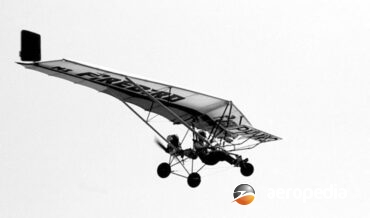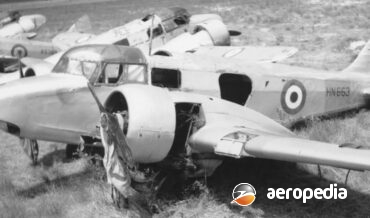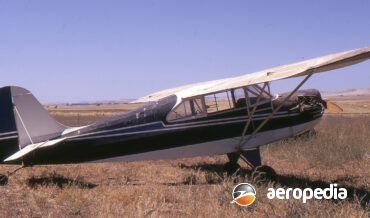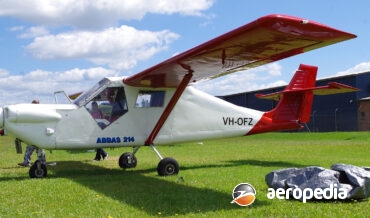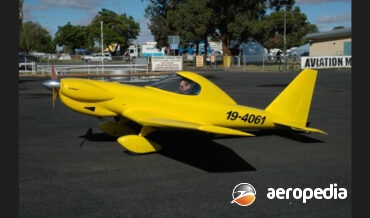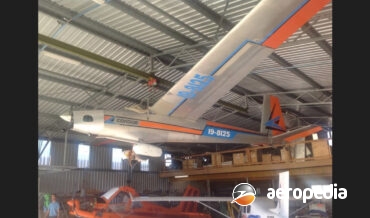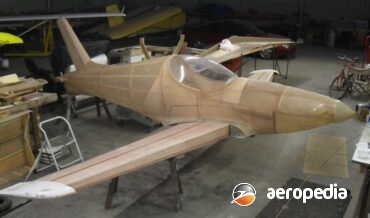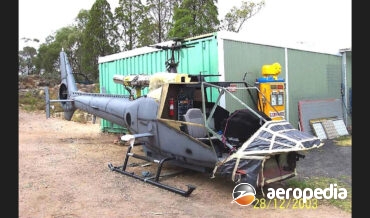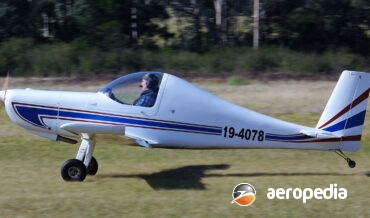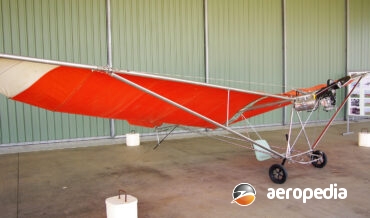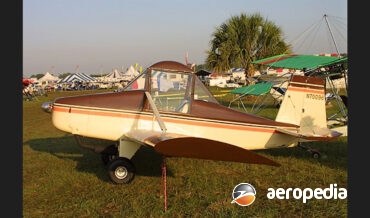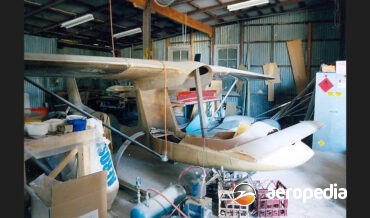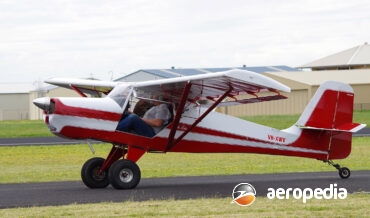All Contents
Contents
The Startech ST-1 was one of a few designs by Anthony Shennan, an Australian, who designed the BeachBoy Staggerwing, Beach Boy ultralight, and light sport aircraft.
David C. Eyre
- June 26, 2020
The Baby Bipe was an ultralight aircraft designed and built by Arthur Armour in the 1980s and was displayed at the Australian International Airshow at Avalon in 1995.
David C. Eyre
- May 25, 2020
The Firebird M-1 was a single-seat light sporting ultralight aircraft with a tricycle undercarriage.
David C. Eyre
- May 25, 2020
Very little is known about this aircraft. It was a light sporting monoplane and one of many designs by Willy Andiel of Port Macquarie, NSW.
David C. Eyre
- May 25, 2020
The Albany aeroplane was a single-engine monoplane along the lines of a Bleriot XI built in Albany WA in about 1916/17 by Messrs C Layton, Robert Reynolds and Alexander Fraser and a Mr G Bristow is said to have been involved, though one record indicates the spelling of his name
David C. Eyre
- May 25, 2020
Following the cessation of hostilities in World War I the Austral Monoplane Co of Hunter Street, Sydney, advertised ‘you can fly with a motor cycle engine – working plans £1.
David C. Eyre
- May 25, 2020
In the 1940s in New Zealand a scaled-down replica of an Oxford was constructed using two Pobjoy Niagara radial engines which had been removed from the General Aircraft Monospar ZK-AET (ex VH-UVM) and which, after a short service with the RNZAF, had been retired and used as Instructional airframe No
David C. Eyre
- May 25, 2020
The Auster series of light aircraft has been popular in Australasia over the years and stories abound about what they have been used for and their roles in country areas.
David C. Eyre
- May 25, 2020
The UD-2 was one of a number of designs produced by Steven Cohen, Known as the UD-2 (Ugly Duckling) it was of alloy construction and fitted with a Rotax two-stroke engine.
David C. Eyre
- May 25, 2020
Charles Auld of Brooklyn Park, SA, constructed an autogyro along the lines of a Cierva and it was fitted with a 34-kw (45-hp) Anzani engine but is not known to have flown.
David C. Eyre
- May 25, 2020
In about 2000 Mr Abbaz, a resident of Sydney, commenced the design and construction of a two-seat in tandem monoplane with a pusher engine and a tricycle undercarriage.
David C. Eyre
- May 25, 2020
In 1930/1931 Mr Ronald Ashworth of Burwood, NSW, designed and built a parasol wing aircraft, Baby Bee, at Blair Park, Croydon, making its first flight in April that year.
David C. Eyre
- May 25, 2020
The Karaone is one of a series of light aircraft produced by Australian Aircraft Works. This company obtained rights to a series of aircraft from the US Company, Grover Textiles, the parent company deciding not to continue its financial backing to its ultra-light division, Grover Aircraft of Hendersonville, North Carolina,
David C. Eyre
- May 25, 2020
The T-Star was designed and built by Arthur Armour and is a single-engine low-wing monoplane of all-metal construction.
David C. Eyre
- May 25, 2020
The Hornet Sport was produced by Australian Aircraft Kits as a development aircraft for a planned future single-seat high-performance sporting aircraft constructed from composites.
David C. Eyre
- May 25, 2020
Little is known about this aircraft but it would seem that it was a single-seat light aircraft modified by Arthur Armor from a Winton Cricket design.
David C. Eyre
- May 25, 2020
Very little is known about this aircraft. However, information available indicates that it was probably a Blanik glider that has been modified by Australian Aircraft Kits of Taree by the installation of a Rotax 912S engine in the nose in an attempt to make it into a self-launched glider.
David C. Eyre
- May 25, 2020
These two were ultralight designs by Arthur Armour, initially of Fairfield, NSW but who later moved to Taree, NSW and continued design and construction of ultra-light aircraft there.
David C. Eyre
- May 25, 2020
This glider was an American design of the late 1920s and one example was built from plans by AMSCo in Victoria in about 1928.
David C. Eyre
- May 25, 2020
The Bonnie was built by Mr Ronald Gower using an incomplete project commenced by L J R Jones. Powered by a converted Henderson motor-cycle engine, its first flight was scheduled to occur at Pyes Estate at Quakers Hill, west of Sydney, on 18 December 1932, but engine problems delayed the
David C. Eyre
- May 25, 2020
On 21 May 1914 Mr J E Bailey flew an aircraft of his own design and construction at Bacchus Marsh, Vic for the first time.
David C. Eyre
- May 25, 2020
Blue Thunder was a 1980s film made in the United States using a highly modified Aerospatiale Gazelle helicopter.
David C. Eyre
- May 25, 2020
This was a three -axis two-seat ultralight monoplane designed and built by Paul Badcock. It was of all metal construction with a fibreglass engine cowling and a tricycle undercarriage.
David C. Eyre
- May 25, 2020
This aircraft commenced life as a Micro Aviation B-22 Bantam but was modified to some extent by the owner/builder John Black of Ngaruawahia, NZ.
David C. Eyre
- May 25, 2020
This ultralight aircraft was designed and built by Australian Aero Engines Corp. Little is known about it but it became 19-3974 (c/n 1) and was registered from 16 September 2003 to October 2006.
David C. Eyre
- May 25, 2020
The Swift was designed and built by Mr Walter Szajnoha of Hazelbrook, NSW and was completed and flown in 2004, being registered under RAA regulations as 19-3159.
David C. Eyre
- May 25, 2020
The Nova is a single-seat low-wing all-composite high-performance light aircraft designed and built by Walter Szajnoha of Hazelbrook, NSW, being registered under ultra-light regulations as 19-4078.
David C. Eyre
- May 25, 2020
The Wasp was a single-seat light aircraft designed in 1978 by Neville White. It was an open cockpit, aircraft, with a Fuji Robin 250-cc engine, a single-cycle unit with a belt drive.
David C. Eyre
- May 25, 2020
The Bennett Condor ZK-CON (c/n 001) was built basically along the lines of a CAB Minicab but using Jodel D-11 plans, this enabling the builder to meet New Zealand micro-light class weight restrictions.
David C. Eyre
- May 25, 2020
In the 1920s Robert Burton commenced construction of a light monoplane aircraft at Tempe, NSW in a shed, stating he was using parts from an Avro 504 he had obtained.
David C. Eyre
- May 25, 2020
Mr George Bellchambers, who lived in an Adelaide suburb, built a glider of his own design in about 1919 and an attempt was made to fly the aircraft at Wall Flat on the Murray River but this was not successful.
David C. Eyre
- May 25, 2020
The X6 was designed in New Zealand as a tandem, two-seat shoulder-wing high-performance sporting monoplane in the late 1970s and construction of a prototype commenced.
David C. Eyre
- May 25, 2020
This was one of a series of aircraft designed and built for the September 1909 Defence Department competition for the best and most suitable aeroplane for military purposes.
David C. Eyre
- May 25, 2020
The Wolff WRD-01 project was begun by Bryce Wolff in 1994, being a self designed and built aircraft originally aimed at registration as an ultra-light in the 95.10 category.
David C. Eyre
- May 25, 2020
This was an ultralight aircraft which, on 27 March 2002, was registered 19-3706 (c/n 231) with the RAA and was fitted with a Lycoming 0-320 engine. It was struck off the register on 12 July 2011.
David C. Eyre
- May 25, 2020
Very little is known about this aircraft but it seems it was placed on the RAA register on 8 November 2006 as 19-4806 (c/n H-20001) and remained on the register for two years, being withdrawn from use on 31 October 2008 and was removed from the register.
David C. Eyre
- May 25, 2020
One of a number of light aircraft designed by Gary Morgan. It was a development of the Cheetah but was heavily modified, having a new tail and elevator and an enlarged fin.
David C. Eyre
- May 25, 2020
The Supercat was a single-seat low wing monoplane marketed by Bowdler Aviation Inc of Beavercreek, Ohio.
David C. Eyre
- May 25, 2020
This aircraft was designed by Mr Raymond Tolhurst as an all-composite light sporting aircraft for his Company Composite Aero Components of Camden NSW.
David C. Eyre
- May 25, 2020
The Cielo Lobo is a light sporting aircraft built by amateur builders. Work commenced on the construction of the first Australian aircraft in 2002 and it was eventually completed and registered with the RAA on 21 July 2010 as 19-7577.
David C. Eyre
- May 25, 2020
Recent Comments
Archives
Categories
- No categories
Categories
- No categories
Latest Posts
Newsletter



